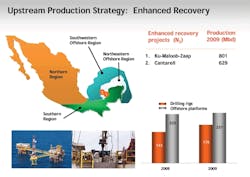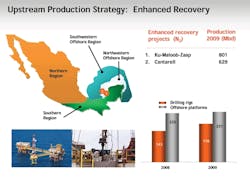End of the rig construction boom
Karen Boman - ODS-Petrodata
The global economic recession, decline in energy demand, and collapse last year of oil and gas prices mean the mobile offshore drilling unit (MODU) construction boom likely is coming to an end.
Three MODU orders have been placed so far this year compared to the 38 rigs ordered in the first six months of 2008, an indication in the slowdown in activity within the offshore industry.
As of the first of June, 165 MODUs were under construction, planned, or on order worldwide. This figure includes 69 jackups, 49 semisubmersibles, 41 drillships, and six tender-assist units. Of these, 44 will be delivered this year into the softening rig market, including 22 jackups.
Jackups continue to comprise a major part of the rigs under construction, planned, or on order. This should concern jackup owners. ODS-Petrodata forecasts a significant surplus of jackups in the market into 2011 at least. Given the oversupply of jackups and the lack of available capital, it remains to be seen whether those rigs that are planned but not yet under construction actually make it past the drawing board.
Despite the current global financial climate, some companies continue to order new rigs on a speculative basis. Of the 24 MODUs ordered in the last half of 2008 and first half of 2009 that remain on the orderbooks, 15 are speculative, that is, without contract commitments in hand. Estimated total cost of the 15 rigs exceeds $5 billion. The total cost of MODUs now under construction, planned, or on order is estimated at $57.8 billion. The total cost for rigs actually under construction is estimated at about $40.9 billion.
Singapore remains home to the largest number of rig construction projects with 44, followed by South Korea with 42, and China with 29.
South Korea-based Samsung Heavy Industries has the most newbuild rigs on its order book at this time with 26. Singapore-based Keppel FELS has 23 construction projects on its roster. Daewoo has 15 rig construction projects, while Jurong Shipyard has 14 projects, and Yantai Raffles Shipyard 11.
As noted, new rigs will be entering a softening rig market where day rates have already declined in some segments.
Day rates have fallen considerably for jackups in the US Gulf of Mexico since May 2008. Last month, the average jackup day rate for the US Gulf was $50,833, down from $73,944 in May of last year.
Jackups continue to depart the US Gulf, and the region’s contracted jackup utilization rate is at its lowest level since May 1987. The number of jackups actually working is at its lowest level since the 1970s.
In the North Sea, jackup day rates also have taken a tumble since May 2008. Last month, the average jackup day rate was $153,750, compared to $208,875 in May of last year.
Floating rig day rates have not been hit as hard by the downturn in activity as have jackup rates. The average day rate for deepwater floating rigs declined over the last year from $484,545 to $473,333.
One bright spot is the mid-water semi market. The average day rate for mid-water semis rose from $357,429 in May 2008 to $425,000 in May of this year.
Despite continued strength in the floating rig market, all rig owners face some uncertainty as operators push for lower costs.


